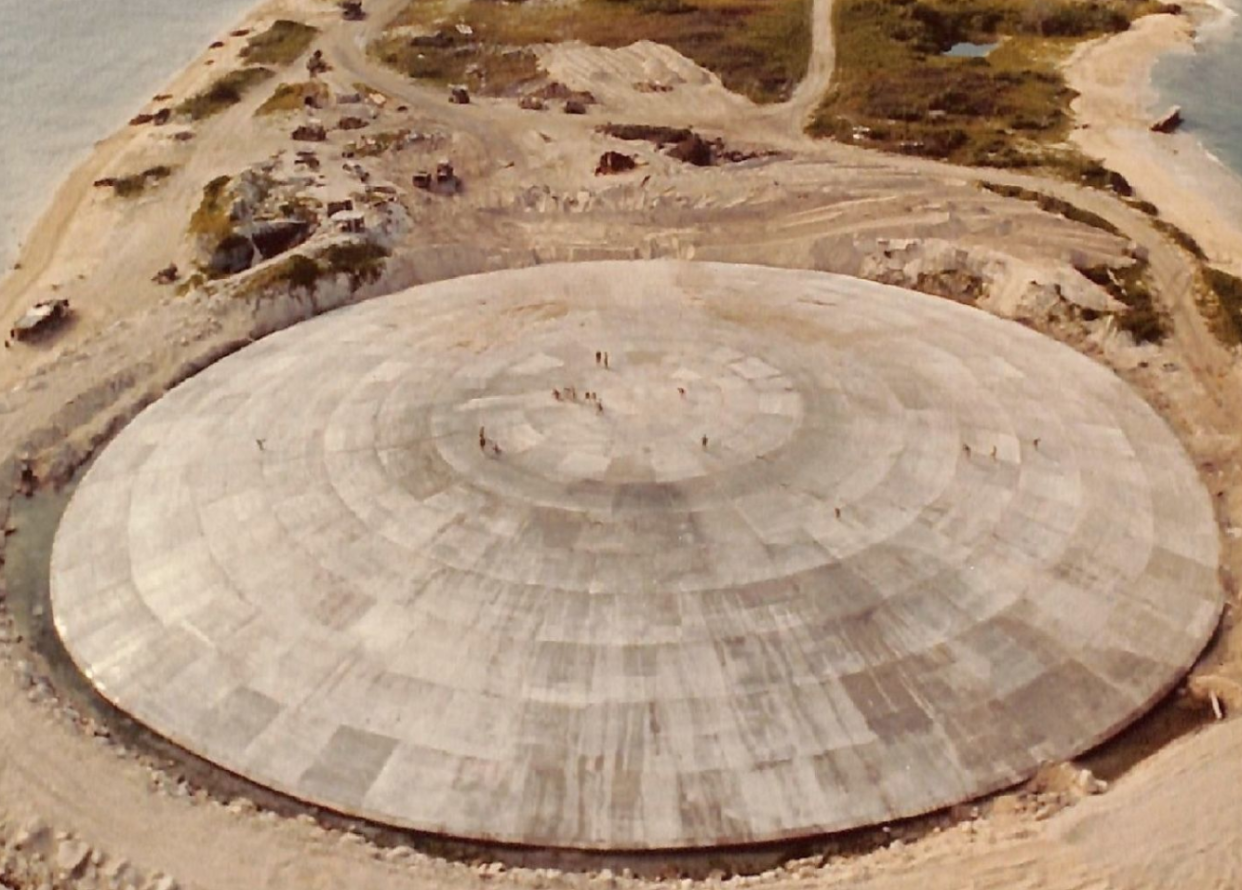Concrete 'tomb' of radioactive debris from nuclear bombs 'is cracking due to climate change'

The surface detonations of nuclear weapons in the late 1940s and 1950s marked a chilling peak in the nuclear arms race - but attempts to bury radioactive waste crated during the explosions could be under threat.
An atoll near the Marshall Islands is under threat, amid reports rising seas could endanger a ‘kind of coffin’ built to contain radioactive materials from America’s nuclear tests.
Leaks from the site could be bleaching coral, killing fish, and possibly harming the health of locals, according to a Los Angeles Times investigation has suggested.
READ MORE
Why Iran’s nuclear escalation goes unchallenged
The 5 biggest nuclear tests in history
The concrete ‘lid’ officially known as the Runit Dome was built on Enewetak Atoll in the Marshall Islands to contain radioactive material from American nuclear tests in the 1950s.
From 1946 to 1958, America conducted 67 nuclear tests in the South Pacific.
The issue around the Runit Dome has been known for a number of years. In 2013, a study of the structure commissioned by the US Government revealed the site would be classified as a “Low-Level Radioactive Waste Disposal Site” if it was located in America.
The study also recommended the “urgent repair” of cracks in the concrete cap in order to prevent rainwater being able to infiltrate the dome and to “alleviate negative public perception”.
A study earlier this year suggested that radiation levels near the site are similar to those near Chernobyl.
Waters around the dome are rising every year.
A tribunal suggested in 1988 that the U.S. should pay £1.7 billion for property and health claims in the area - but just £3.1 million has been paid to date, the LA Times reported.
U.N. Secretary-General Antonio Guterres travelled to the islands last year to highlight the effects of climate change.
Speaking in Fiji, he said that the dome is dangerously vulnerable, and that a strong storm could release the debris inside.
Mr Guterres said: “I’ve just been with the president of the Marshall Islands (Hilda Heine), who is very worried because there is a risk of leaking of radioactive materials that are contained in a kind of coffin in the area.”


